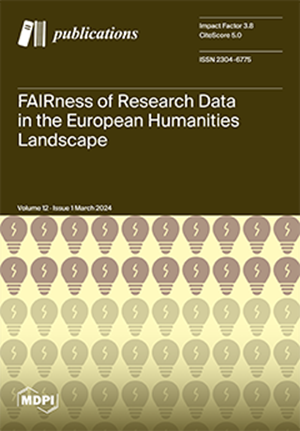In-Depth Examination of Coverage Duration: Analyzing Years Covered and Skipped in Journal Indexing
IF 4.6
Q1 INFORMATION SCIENCE & LIBRARY SCIENCE
引用次数: 0
Abstract
Journals that have consistently maintained uninterrupted indexing over an extended period can be assumed to possess stability and sustainability in journal indexing. Building on this assumption, the objective of this study is to scrutinize the years omitted in the indexing of Scopus-indexed journals. To conduct this study, three coverage duration indicators—nyears-covered (total years covered), nyears-skipped (years skipped), and skipped/covered ratio (proportion of years skipped to total years covered)—were formulated. Data from SCImago Journal Rank (SJR) for 2022, consisting of 16,762 records (62% of downloaded data) with a coverage duration of 25 years or less, were used for this study. The results revealed that around 10% of Scopus-indexed journals experienced exclusions or coverage gaps. Longer coverage correlates positively with documents published, h-index, and citations, while skipped years decrease with these indicators. Open access (OA) journals exhibited a lower skipped/covered ratio than non-OA journals, suggesting a better sustainability of indexing than non-OA journals. Disciplinary differences in Scopus journal coverage duration revealed notable variation, suggesting that coverage duration indicators can be effectively used to evaluate journal stability within Scopus. Overall, the coverage gaps reflect Scopus’s efforts to regulate the journals it indexes. The coverage duration indicators proposed in this study can be applied to assess the stability of periodicals in any database, providing insights into the broader dynamics and quality standards maintained by a database, where the database periodically adds and removes its indexed contents.深入研究报道持续时间:分析期刊索引中涵盖和跳过的年份
我们可以认为,长期不间断编制索引的期刊具有期刊索引的稳定性和可持续性。基于这一假设,本研究的目的是对 Scopus 索引期刊在编制索引时遗漏的年份进行仔细研究。为了开展这项研究,我们制定了三个覆盖持续时间指标--覆盖年数(覆盖总年数)、跳过年数(跳过年数)和跳过/覆盖比(跳过年数占覆盖总年数的比例)。本研究使用的数据来自 2022 年的 SCImago 期刊排名(SJR),包括 16,762 条记录(占下载数据的 62%),覆盖年限为 25 年或更短。研究结果显示,约有 10% 的 Scopus 索引期刊出现了排除或覆盖空白。较长的覆盖期与发表文献、h 指数和引文量呈正相关,而跳过的年份与这些指标呈负相关。开放存取(OA)期刊的跳过/覆盖率低于非开放存取期刊,这表明索引的可持续性优于非开放存取期刊。Scopus 期刊覆盖年限的学科差异显著,表明覆盖年限指标可有效用于评估 Scopus 中期刊的稳定性。总体而言,覆盖率差距反映了 Scopus 在规范所收录期刊方面所做的努力。本研究提出的覆盖持续时间指标可用于评估任何数据库中期刊的稳定性,从而深入了解数据库在定期添加和删除索引内容时所保持的更广泛的动态和质量标准。
本文章由计算机程序翻译,如有差异,请以英文原文为准。
求助全文
约1分钟内获得全文
求助全文
来源期刊

Publications
Social Sciences-Library and Information Sciences
CiteScore
6.50
自引率
1.90%
发文量
40
审稿时长
11 weeks
期刊介绍:
The scope of Publications includes: Theory and practice of scholarly communication Digitisation and innovations in scholarly publishing technologies Metadata, infrastructure, and linking the scholarly record Publishing policies and editorial/peer-review workflows Financial models for scholarly publishing Copyright, licensing and legal issues in publishing Research integrity and publication ethics Issues and best practices in the publication of non-traditional research outputs (e.g., data, software/code, protocols, data management plans, grant proposals, etc.) Issues in the transition to open access and open science Inclusion and participation of traditionally excluded actors Language issues in publication processes and products Traditional and alternative models of peer review Traditional and alternative means of assessment and evaluation of research and its impact, including bibliometrics and scientometrics The place of research libraries, scholarly societies, funders and others in scholarly communication.
 求助内容:
求助内容: 应助结果提醒方式:
应助结果提醒方式:


